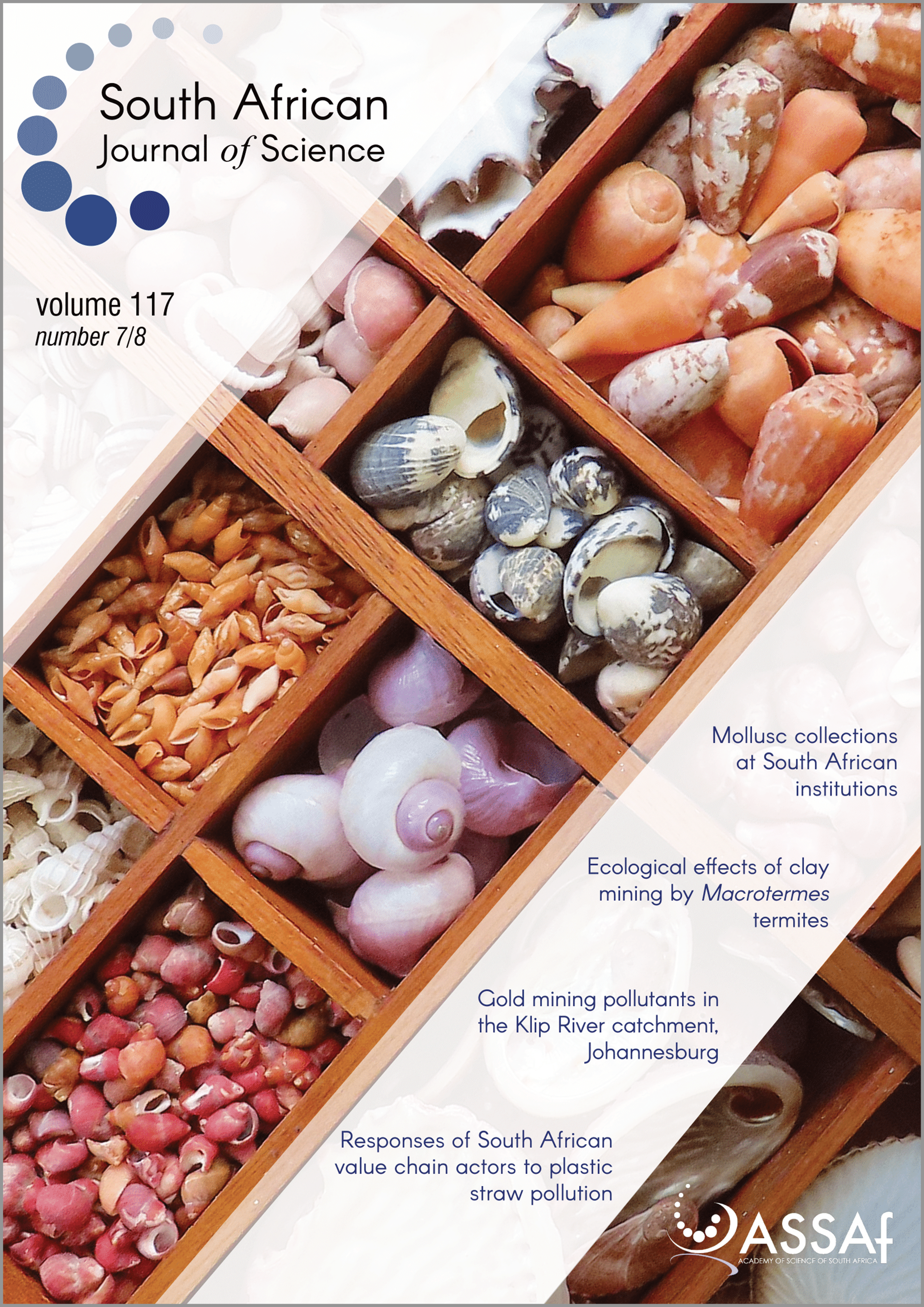What is the role of zooxanthellae during coral bleaching? Review of zooxanthellae and their response to environmental stress
DOI:
https://doi.org/10.17159/sajs.2021/8369Keywords:
climate change, Symbiodinium, antioxidant enzymes, heat-shock proteinsAbstract
Coral reefs are diverse and productive but sensitive ecosystems. Due to the impact of climate change, these organisms are in danger of dying out, mainly through the process of coral bleaching, which is the process by which zooxanthellae (algal endosymbionts) are expelled from their respective coral hosts, causing the coral to lose colour and become white. Coral bleaching has been linked to increases in sea surface temperatures as well as an increase in light intensity. We reviewed the different zooxanthellae taxa and their ecological traits, as well as the information available on the protective mechanisms present in zooxanthellae cells when they experience environmental stress conditions, such as temperature fluctuations, specifically concentrating on heat shock proteins and their response to antioxidant stress. The eight clades (A–H) previously recognised were reorganised into seven existing genera. Different zooxanthellae taxa exhibit different ecological traits such as their photosynthetic stress responses to light and temperature. Zooxanthellae have the ability to regulate the number and type of heat shock proteins (Hsps) they produce during a heat response. They can also regulate the host’s respective Hsps. Antioxidant responses that can prevent coral hosts from expelling the zooxanthellae, can be found both within exposed coral tissue and the zooxanthellae cells. Despite the lower likelihood of bleaching in South African coral reefs, genetic engineering presents a useful tool to understand and adapt traits within zooxanthellae genotypes to help mitigate coral bleaching in the future.
Significance:
- Coral bleaching is the expulsion of zooxanthellae (algal symbionts) from the respective coral host, mainly due to elevated sea surface temperatures and light intensities, but numerous other factors, such as changes concerning salinity (ocean acidification), may also cause coral bleaching, although to a much lesser extent.
- A specific clade of zooxanthellae can be linked to their coral host’s susceptibility to variation in oceanic temperatures, most probably by regulating both the host’s respective heat shock proteins as well as their own.
- South African reefs have not experienced coral bleaching to the same degree as elsewhere in the world, mainly due to their unique reef topography and oceanic currents.
- Genetic bioengineering of zooxanthellae cells provides a plausible solution to save southern African coral reefs before it is too late.
Published
Issue
Section
License

All articles are published under a Creative Commons Attribution 4.0 International Licence
Copyright is retained by the authors. Readers are welcome to reproduce, share and adapt the content without permission provided the source is attributed.
Disclaimer: The publisher and editors accept no responsibility for statements made by the authors
How to Cite
- Abstract 2651
- PDF 2166
- EPUB 175
- XML 204












.png)